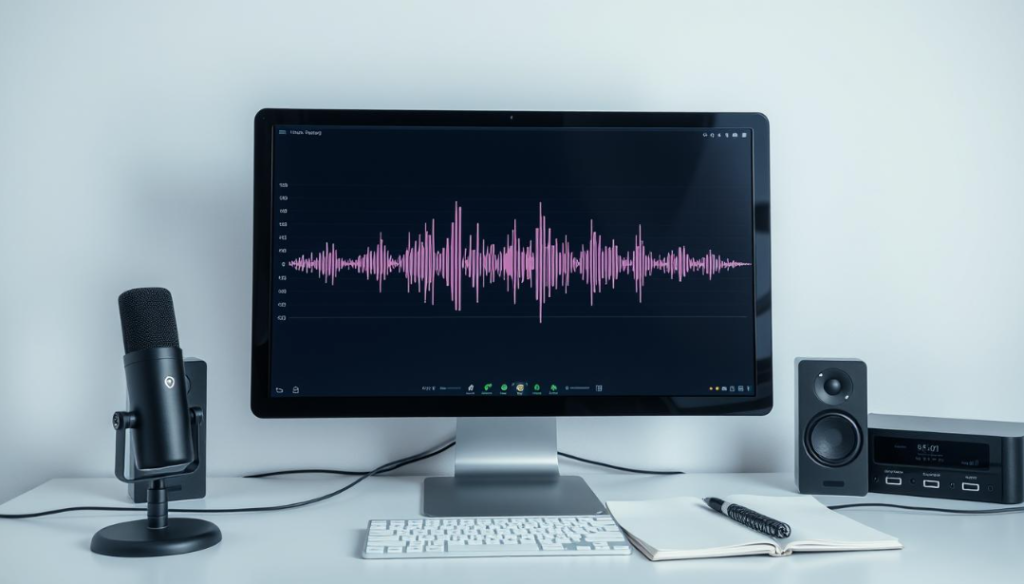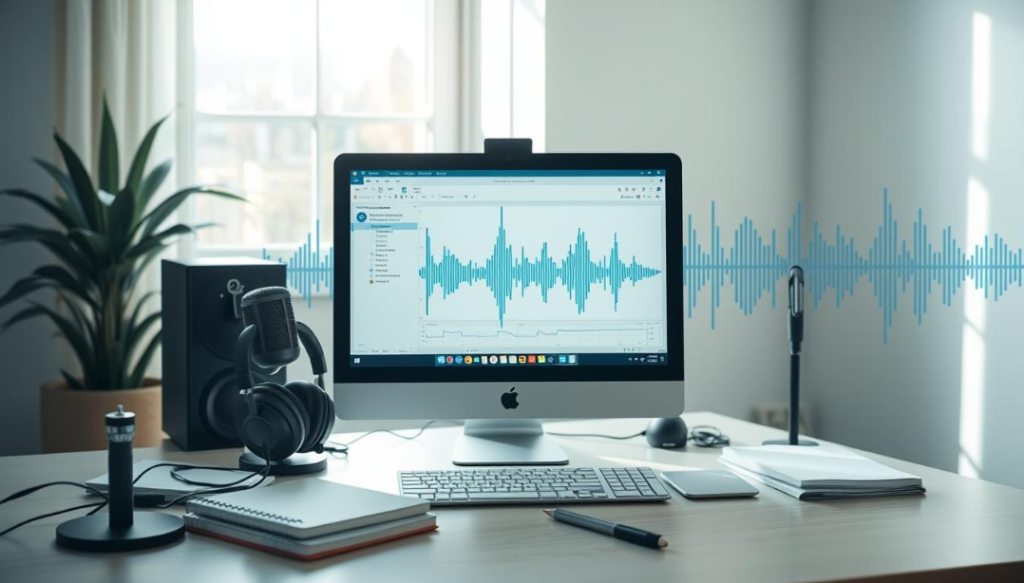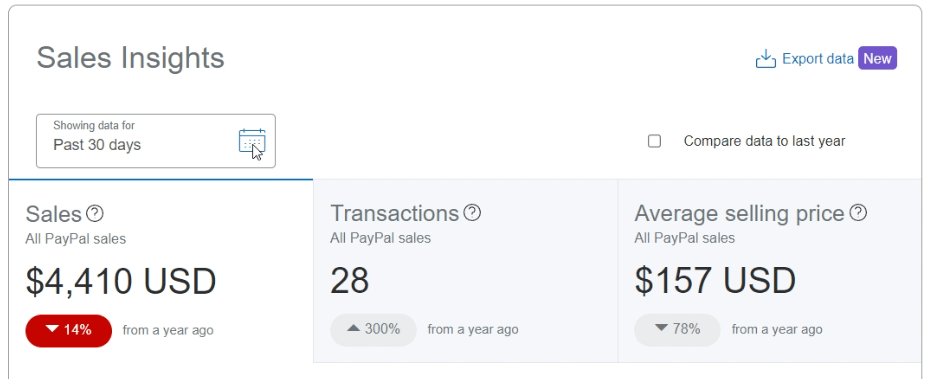AFFILIATE DISCLOSURE
This post may contain affiliate links. An affiliate means Escribr may earn referral fees if you make a purchase through our link without any extra cost to you. It helps to keep this blog afloat. Thanks for your support!
Did you know that by visiting this blog, you are doing good in the world? READ THIS.
Ahh, the modern world – always moving a mile a minute.
Between non-stop emails, video calls that never end, and trying to keep up with the latest slang, who’s got time to sit and manually type out every single word? Not me, that’s for sure.
Luckily, there’s this crazy new technology that can take the pain out of transcription – it’s called speech-to-text, and it’s about to change your life.
No more tedious typing, cramped fingers, or accidentally writing “their” when you meant “there.”
With the power of AI, you can transform spoken words into written text in the blink of an eye.
But how exactly does this speech recognition wizardry work?
And is it really as reliable as good old human transcriptionists?
Well buckle up, because we’re about to take a deep dive into the world of automated transcription.

The Genius Inner Workings of Speech-to-Text
Okay, let’s start by looking under the hood of these speech recognition systems.
At the core, it’s all about artificial intelligence (AI) and machine learning.
Developers have trained these algorithms on gigantic databases of human speech, teaching them to recognize different voices, accents, slang terms – you name it.
There are a few key components that make the magic happen:
- Acoustic Modeling: This is where the software analyzes the actual sounds and audio patterns to identify individual words. It’s like having a hyper-sensitive pair of robo-ears that can pick up on every little nuance.
- Language Modeling: Once the sounds are recognized, the system then uses natural language processing to put the words into their proper context. So it can understand things like idioms, technical jargon, and how words are typically used together.
- Decoding: The final step is taking all that acoustic and language data and translating it into the actual written text. This is where the real AI wizardry happens, as advanced algorithms work their digital magic.
Over the years, these speech recognition technologies have gotten WAY better.
Improvements in areas like neural networks and deep learning have allowed the systems to handle more complex speech patterns and accents.
Heck, the speech and voice recognition market is projected to grow from $9.4 billion in 2022 to $28.1 billion by 2027.
That’s a ton of growth, showing just how useful and in-demand this tech has become.
The Rise of the Robots (Transcriptionists)
One of the biggest ways speech-to-text has made its mark is through the explosion of AI transcription services.
These are cloud-based platforms that use advanced speech recognition to quickly turn audio recordings into text documents.
The main benefits of these automated transcription services include:
Speed and Efficiency: With the power of AI, these services can transcribe audio in real-time, or at least way faster than a human ever could. Perfect for live events, interviews, and never-ending meetings.
Cost-Effectiveness: Automated transcription is generally a lot cheaper than hiring a human transcriptionist, especially for large projects. We’re talking as little as 7 cents per minute in some cases.
Scalability: Since the transcription is handled by algorithms rather than humans, these services can easily handle huge volumes of audio data. Great for businesses with tons of transcription needs.
Now, I should mention that the AI still isn’t perfect – it can struggle with things like complex audio, industry jargon, and strong accents.
But with regular software updates and some good old human oversight, the accuracy keeps getting better and better.
The robots are steadily taking over the transcription game, one word at a time.

The Many Wondrous Benefits of Speech-to-Text
Okay, enough with the technical mumbo-jumbo.
Let’s talk about why this speech recognition tech is such a game-changer in the first place. There are some seriously awesome benefits:
- Bye-Bye, Carpal Tunnel! No more hours of tedious typing. With speech-to-text, you can just talk and watch the words magically appear on the screen. Goodbye, cramped fingers – hello, productivity.
- Everyone Can Join the Party: Speech-to-text makes information super accessible, especially for people who have trouble hearing or typing. It’s perfect for live captioning, note-taking, you name it. No one gets left out.
- Need it Yesterday? No Problem: The real-time transcription capabilities are pure gold. Imagine being able to instantly turn a meeting, interview, or phone call into a written document. Talk about streamlining your workflow.
Overall, speech-to-text is just an insanely useful tool that’s reinventing how we work, learn, and communicate.
It’s making us more efficient, more inclusive, and better equipped to make snap decisions.
No wonder it’s becoming so darn popular.
The Robots Aren’t Perfect (Yet)
Of course, I’d be lying if I said speech-to-text was 100% perfect. There are still a few kinks that need to be worked out:
Oops, I Mean… That’s Not What I Said: Despite major advances, these AI systems can still struggle with accuracy, especially when dealing with things like accents, background noise, and multiple speakers. Gotta stay on your toes for those pesky transcription errors.
Commas? Capital Letters? Forget About It: Automated transcripts often lack the proper formatting, punctuation, and capitalization that you’d get from a human, can make the text a little tough to read sometimes.
Your Data Isn’t Safe With Me: When you’re using a third-party transcription service, you’ve gotta be super careful about how your audio recordings and transcripts are being handled and secured. Privacy is a big concern.
These issues show that while speech-to-text is crazy powerful, it’s not quite ready to completely replace good old human transcriptionists.
In many cases, you’ll still want a person to double-check and clean up the automated output to ensure accuracy and quality.
Finding the Right Balance
So how do you decide when to use automated speech-to-text versus relying on human transcription? It really comes down to evaluating your specific needs and the trade-offs involved.
For example, if you just need fast, affordable transcription for a ton of audio – like customer service calls or a big conference – then an AI service could be perfect. The speed and cost savings might be worth dealing with a few minor mistakes.
But if you’re dealing with super sensitive, high-stakes content – like legal proceedings or medical records – then human transcriptionists are probably the way to go. The extra quality control and attention to detail is essential.
The key is to carefully consider factors like:
- Importance of 100% accuracy
- Complexity and specialized language
- Turnaround time required
- Your budget and cost constraints
With a little strategic thinking, you can find the right balance and leverage the strengths of both automated and human transcription. It’s all about using the right tool for the job at hand.
Speech-to-Text Taking Over the World
Alright, now that we’ve covered the basics, let’s take a look at how this speech recognition tech is being used in the real world.
Spoiler alert – it’s kind of taking over.
Healthcare: Doctors and nurses are using speech-to-text to document patient info right into electronic health records. Saves tons of time and lets them focus more on actual patient care.
Customer Service: Call centers are harnessing the power of automated transcription to better assist callers. The tech can instantly capture customer inquiries and feedback.
Business World Domination: From meeting notes to financial reports, speech-to-text is boosting productivity and collaboration in all kinds of corporate settings. The robots are coming for your job (in a good way).
The list goes on and on. As the technology keeps advancing, we’re gonna see speech-to-text becoming an integral part of how we work, learn, and communicate across pretty much every industry. It’s a revolution, I tell ya.

The Future is Brigher Than a Thousand Suns
Speaking of the future, the outlook for speech-to-text is absolutely mouthwatering. Experts predict we’re gonna see even more mind-blowing advancements, including:
Mastering Complex Language: As AI keeps getting smarter, these systems will become experts at handling specialized vocab, regional dialects, and other tricky language patterns. Bye-bye, transcription errors.
Detecting Emotions: Some next-gen speech-to-text might even be able to pick up on the speaker’s tone and emotional state. Imagine the possibilities in customer service and mental health.
Seamless Integration: We’ll likely see speech recognition become super seamlessly integrated with all kinds of other tech, from virtual assistants to video conferencing apps. The robots are taking over, one platform at a time.
Unlocking “Dark Data”: Businesses are realizing the huge value in all that unstructured voice data that’s been going untapped. AI-powered transcription can help them uncover game-changing insights.
The future is bright, my friends. As speech-to-text technology continues to mature and expand its capabilities, I have a feeling we’re only scratching the surface of what’s possible. Get ready for a world where tedious transcription is a thing of the past.
Wrap-Up
We covered pretty much everything you need to know about the amazing world of speech-to-text technology. From the inner workings to the real-world applications to a glimpse of the future, you’re now a certified expert.
The bottom line is that speech-to-text software is an absolute game-changer. It’s making us more productive, more inclusive, and better equipped to capture and leverage spoken information. Sure, it’s not perfect – but the robots are getting smarter every day.
So whether you’re a busy professional, a student, or just someone who’s sick of slow, painful transcription, I highly recommend giving speech-to-text a try. It just might change the way you work and communicate forever. Your fingers will thank you.











